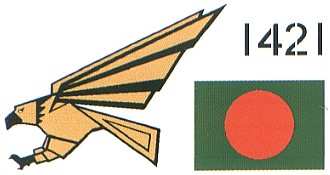1⁄35Making Custom Decals
The ALPS printers, like most color printers, make colors by mixing small dots in varying densities so that the final image approximates the actual color it is intended to make. This is OK for printing output for presentations at work. It is less than desirable for model decals. "Newspaper print" graphics are not so great when the markings are supposed to be solid reds, yellows, and blues. I have found a way to reduce this half-toning effect, but it works only because I use an MD-5000. None of the other printers in the line have the capability.
There is a special print paper created specifically for the MD-5000 printer called V-Photo Print Film. It is a very thin, almost plastic-like paper with an extremely smooth finish. Selecting V-Photo Print Film in the print output dialog for the printer enables 2400 DPI printing on the printer. At 2400 DPI, the half-tone dots are nearly impossible to really see and the colors turn out much smoother than they would appear at the 600 DPI of a standard print. On V-Photo Print Film, I can make photographic prints using the standard ink cartridges that compare favorably to the Dye Sublimation prints made on true photographic paper.
Thus, to minimize the half-tone effect when printing decals images on decal paper, I lie to the printer and tell it I am printing on V-Photo Print Film. This makes the printer use 2400 DPI printing on the decal images and greatly improves the output quality. Fortunately, the decal paper is smooth enough that the printer does not seem to be adversely affected by this little white lie. For those with printer models other than the MD-5000, I have no silver bullet for you on this. My understanding is that the printers work the way they work and you need to tinker with them to find other ways to beat this issue.
|
Output Samples |
|
 600 DPI Printing |
 2400 DPI Printing |
I still have a half-tone grain in my color images, even at 2400 DPI. Hence, no
ALPS color output can compete with a silk-screen printed decal as printed by
most all of the decal manufactures. There are also some limits on the colors.
For some reason, yellows and oranges are really hard colors to get the ALPS to
print with the proper color shift. Yellow seems to always be too much of a
lemon-yellow, not a gold-yellow. Oranges are generally too red or brown.
Black and white output, on the other hand, does compare quite favorably to
silk-screen printed decals. This is due in part because black and white do not
use half-tones to create the colors. The ink is transferred to the paper in a
solid color printing style that has no visible grain in the image. Metallic
silver and gold inks work the same as the black and white ones and provide solid
colors with no half-tones.
One caution -- attempting to get 2400 DPI print by using the Dye Sublimation
process on decal paper (if you have an MD-1300) is tempting, but is potentially
harmful to the printer. The printing process for Dye Sublimation is chemically
designed to only work on photographic paper. Any other paper, including decal
paper, lacks the needed chemicals on the paper surface and can end up damaging
the printer.








